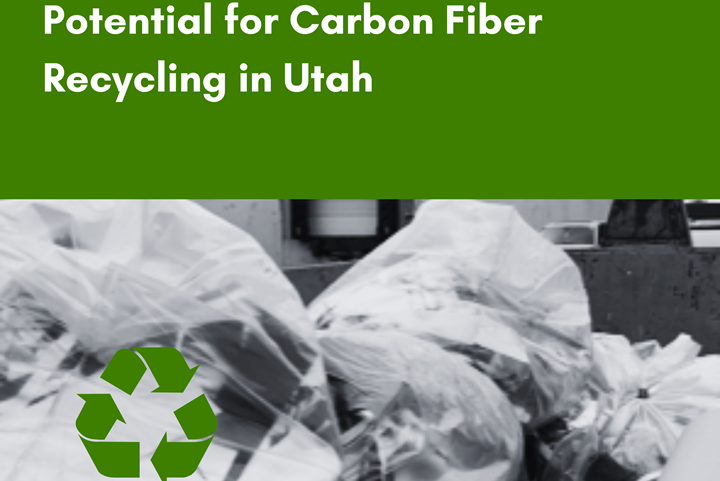UAMMI white paper addresses composites recycling in Utah
Foundational research discusses the current carbon fiber recycling landscape in Utah, and evaluates potential strategies and policies that could enhance this sustainable practice in the region.

Photo Credit: UAMMI
The Utah Advanced Materials and Manufacturing Initiative (UAMMI, Kaysville) announces the release of its white paper on the “Potential for Carbon Fiber Recycling in Utah.” The report highlights the opportunity for Utah to become a leader in sustainable manufacturing practices by addressing the pressing issue of carbon fiber waste.
“Utah as the leader in carbon fiber for aerospace and defense, outdoor recreation manufacturing and medical products, needs to find solutions to recycling carbon fiber,” according to Dr. Tulinda Larsen, president of UAMMI. “This white paper provides the foundational research to guide policy discussions and to provide industry with factual data to address recycling.”
Nationwide, manufacturing using carbon fiber results in 30% waste, which currently ends up in landfills and contributes to environmental concerns. Utah state leadership, like the rest of the composites industry, recognizes the urgent need for viable recycling solutions.
Embracing this initiative, UAMMI believes that Utah — with its commitment to sustainability and innovation — has the potential to revolutionize its manufacturing landscape, promote environmental stewardship and reduce its carbon footprint significantly by fostering a collaborative environment between the public and private sectors; numerous recycling companies with a diverse array of recycling methodologies have reportedly expressed interest in establishing operations in this region.
“We believe that transforming carbon fiber waste into a valuable resource is not only environmentally responsible but also potentially economically beneficial,” David Beckerman, director of Grants, a representative from UAMMI, emphasizes. “Our white paper highlights the advancements in carbon fiber recycling technologies and showcases how Utah can attract potential recyclers with innovative solutions to operate within the state.”
The key objectives of the report include:
- Identifying the scale of carbon fiber waste in Utah’s industries.
- Showcasing successful developments in carbon fiber recycling technologies across the globe.
- Evaluating the economic and environmental benefits of establishing a recycling infrastructure in Utah.
- Proposing strategies and policies to attract recyclers and encourage partnerships.
- Proposing to create a consortium of organizations to seek solutions
UAMMI invites stakeholders, industry leaders and environmental advocates to engage in meaningful discussions surrounding the potential for carbon fiber recycling in Utah.
For more information and to access the full report, visit this link.
Other recycling initiatives being established throughout the composites industry can be viewed here.
Related Content
-
Combining multifunctional thermoplastic composites, additive manufacturing for next-gen airframe structures
The DOMMINIO project combines AFP with 3D printed gyroid cores, embedded SHM sensors and smart materials for induction-driven disassembly of parts at end of life.
-
MFFD longitudinal seams welded, world's largest CFRTP fuselage successfully completed
Fraunhofer IFAM and partners have completed left and right welds connecting the upper and lower fuselage halves and sent the 8×4-meter full-scale section to ZAL for integration with a cabin crown module and testing.
-
“Structured air” TPS safeguards composite structures
Powered by an 85% air/15% pure polyimide aerogel, Blueshift’s novel material system protects structures during transient thermal events from -200°C to beyond 2400°C for rockets, battery boxes and more.















